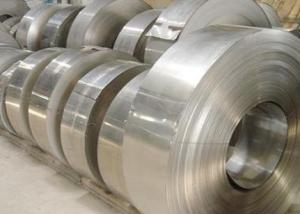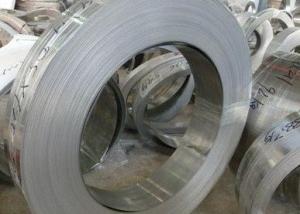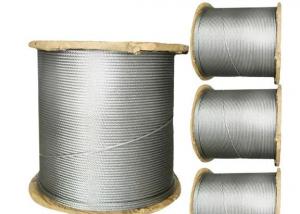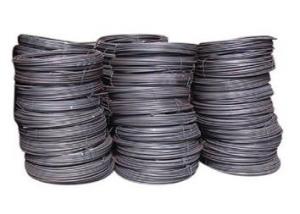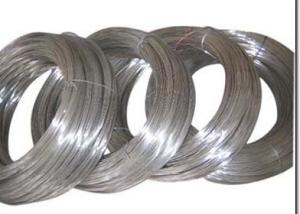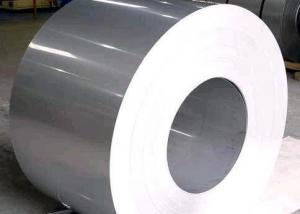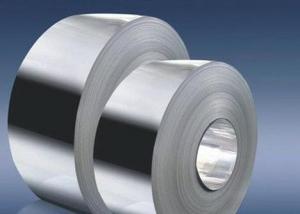316L Stainless Steel Strips
- Loading Port:
- China Main Port
- Payment Terms:
- TT or LC
- Min Order Qty:
- 1 Ton m.t.
- Supply Capability:
- 2000 Tons Per Month m.t./month
OKorder Service Pledge
OKorder Financial Service
You Might Also Like
316L Stainless Steel Strips
1. Chemical composition
|
C |
Si |
Mn |
P |
S |
Ni |
Cr |
|
Max0.03 |
max1.00 |
max2.00 |
max0.045 |
max0.03 |
10.00-14.00 |
16.00-18.00 |
2. Mechanical properties
|
Yield Strength |
Tensile |
Elongation |
Hardness (HV) |
Hardness (HRB) |
|
≥175 |
≥480 |
≥40 |
≤200 |
≤90 |
3. Standard: AISI, ASTM, GB, EN, DIN, JIS
4. Surface: 2B, NO.1, BA, NO.4, Hairline, SB, Mirror finish, Anti-skid, Cherkered etc.
5. Size: Thickness: 0.3-3mm (cold rolled), 3-40mm (hot rolled)
Width: 18-600mm.
Length: As customers' request.
6. MOQ: 1 Ton
7. Payment terms: T/T or L/C
8. Packing: Seaworthy package with wooden or Iron pallets with the paper and the steel strip, or as customers' request.
9. Delivery time: Usually about 7 days after we confirming the order, or according to your quantity.
If you have any question or demand, pls feel free to contact me.
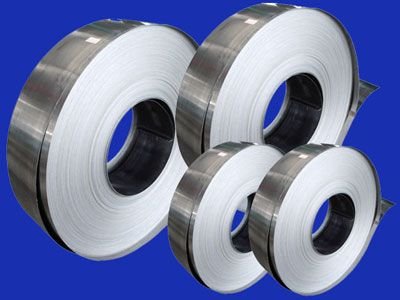
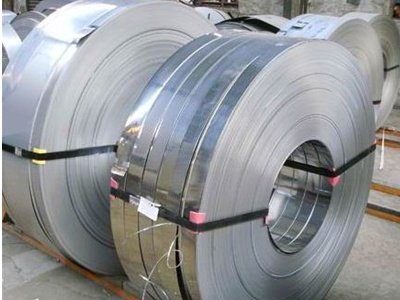

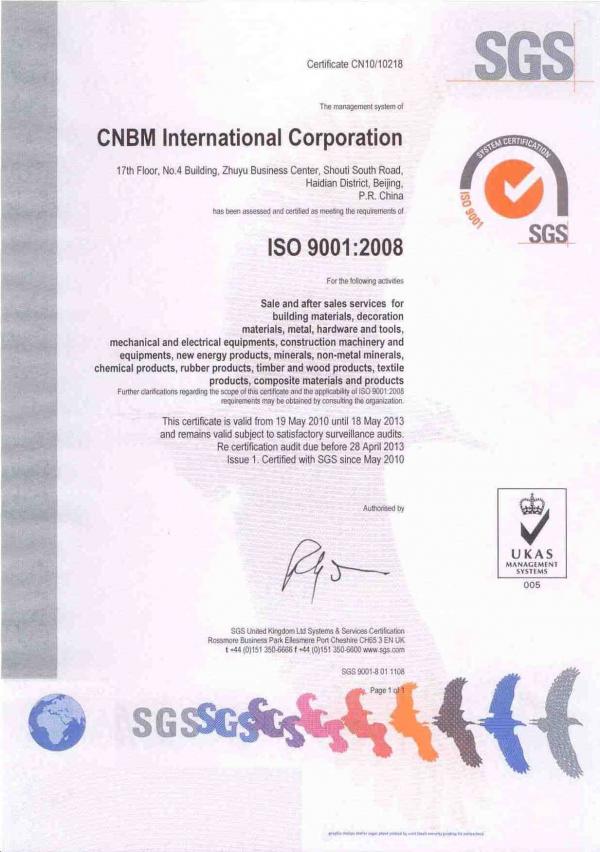
- Q:What kind of material is stainless steel drawing stainless steel? What are the main advantages and disadvantages?
- The advantages of the so-called oil grinding sand drawing sand is that the surface is more delicate, the visual effect is relatively better, better rust resistance, and other physical properties have not changed, the disadvantage is that the processing price is relatively high. If you do not require high selection of domestic grinding machine, because the water gas will rust. Stainless steel can also rust.
- Q:What are the different types of stainless steel wire ropes used in marine applications?
- There are several types of stainless steel wire ropes commonly used in marine applications. These include 316 stainless steel wire ropes, which are highly corrosion-resistant and suitable for use in harsh marine environments. Another type is 304 stainless steel wire ropes, known for their excellent strength and durability. Additionally, there are duplex stainless steel wire ropes, which offer enhanced corrosion resistance and higher strength compared to other types. Other variations may include galvanized stainless steel wire ropes, which are coated with zinc for added protection against corrosion.
- Q:What is the diameter range of stainless steel wire?
- The specific application and manufacturing process can cause the diameter range of stainless steel wire to vary. Typically, stainless steel wire can be obtained in a wide range of diameters. These can range from extremely thin, as little as 0.001 inches (0.0254 millimeters), to significantly thicker, reaching up to 0.5 inches (12.7 millimeters) or even larger. The availability of a specific diameter range will be influenced by factors including the desired strength, flexibility, and conductivity of the wire, as well as its intended use.
- Q:How are stainless steel wire screens used in mining?
- The mining industry heavily relies on stainless steel wire screens, which are utilized throughout various stages of the mining process. These screens are crucial for tasks such as mineral separation, classification, and dewatering. During the initial stage of mining, known as exploration, stainless steel wire screens are particularly important. This involves extracting core samples from the earth to assess the presence and quality of minerals. These screens act as filters, separating the extracted material based on its particle size. This enables accurate analysis and classification of the samples by geologists and mining engineers. Throughout the mining operation itself, stainless steel wire screens are used in multiple capacities. For example, they are employed in vibrating screens and trommel screens to classify and separate extracted materials based on their size and shape. This ensures that the extracted minerals are properly sized, which is vital for efficient processing and recovery. Additionally, stainless steel wire screens are used for dewatering purposes in the mining industry. When minerals are extracted from the ground, they often contain a significant amount of water. Dewatering screens equipped with stainless steel wire mesh are utilized to remove excess moisture, making the materials easier to handle and transport. This process enhances the efficiency of subsequent mineral processing steps. Moreover, stainless steel wire screens play a role in various mineral processing equipment like crushers, mills, and flotation cells. They act as protective barriers, preventing oversized particles from entering these machines and reducing the risk of damage. This ensures smooth operation and longevity of the equipment. Furthermore, stainless steel wire screens are crucial in tailings management. Tailings refer to the waste materials produced during mineral extraction and processing. These screens are used to dewater and separate the solid tailings from the liquid, allowing for proper disposal or further treatment of the waste. Overall, stainless steel wire screens are indispensable in the mining industry due to their durability, corrosion resistance, and precise mesh sizes. They contribute significantly to the efficiency and effectiveness of mining operations, from exploration to final waste management.
- Q:What are the different diameter options available for stainless steel wire?
- The diameter options available for stainless steel wire vary depending on the specific application and requirements. However, common diameter options range from thin gauges like 0.005 inches (0.13 mm) to thicker gauges like 0.375 inches (9.53 mm). The diameter chosen will depend on factors such as the intended use, strength requirements, and desired flexibility of the stainless steel wire.
- Q:What are the different types of coatings available for stainless steel wire?
- There are several different types of coatings available for stainless steel wire, including nylon, polyvinyl chloride (PVC), polyethylene (PE), polypropylene (PP), and epoxy. Each coating offers different properties and benefits, such as improved corrosion resistance, increased durability, and enhanced electrical insulation. The choice of coating depends on the specific application requirements and desired performance characteristics.
- Q:Can stainless steel wire be used for woven wire mesh?
- Yes, stainless steel wire can be used for woven wire mesh. Stainless steel is a popular choice for woven wire mesh due to its durability, corrosion resistance, and strength. The wire is woven together in a crisscross pattern to create a mesh-like structure that can be used in a variety of applications such as filtration, screening, fencing, and many others. Stainless steel wire mesh offers excellent tensile strength, high temperature resistance, and is highly resistant to rust and corrosion. It is also available in various grades and mesh sizes, making it suitable for a wide range of industrial and commercial uses.
- Q:Can stainless steel wire be used in electrical applications?
- Yes, stainless steel wire can be used in electrical applications. Stainless steel wire is known for its excellent corrosion resistance, high strength, and good conductivity. These properties make it suitable for various electrical applications, such as in the manufacturing of electrical connectors, terminals, and conductors. Additionally, stainless steel wire can withstand high temperatures, which is essential in applications where heat resistance is required. Moreover, stainless steel wire is often used in harsh environments, such as marine or industrial settings, where its corrosion resistance ensures its longevity and reliability. Therefore, stainless steel wire is a popular choice for electrical applications due to its combination of electrical conductivity, corrosion resistance, strength, and heat resistance.
- Q:What type of welding machine is needed for 0.3 mm thick stainless steel welding? Hand welding. Do you need a wire feeder?
- 0.3mm thickness stainless steel, need to consider pulse argon arc welding. Pulsed argon arc welding; base value current; superimposed pulse; peak current; welding wire. The arc is uninterrupted without re igniting the arc. Heat input can be controlled, not easy to burn through, the thinnest can weld 0.1mm thick workpiece. It is difficult to weld workpieces lower than 0.8mm by common direct current argon arc welding. Leakage is inevitable. Unable to meet the requirement.
- Q:Is stainless steel wire resistant to alkaline environments?
- Indeed, stainless steel wire exhibits resistance to alkaline environments. Renowned for its exceptional corrosion resistance properties, stainless steel withstands exposure to alkaline substances, including bases and alkalis, without enduring noteworthy harm or deterioration. Consequently, stainless steel wire proves to be a fitting option for scenarios in which it will encounter alkaline environments, such as chemical processing plants, wastewater treatment facilities, and marine settings. The substantial quantities of chromium within stainless steel generate a protective oxide layer on its surface, serving as a barricade against corrosion. This fortifies the wire's endurance and lifespan when faced with alkaline conditions.
1. Manufacturer Overview |
|
|---|---|
| Location | Shandong,China |
| Year Established | 2005 |
| Annual Output Value | Above US$5.3 Million |
| Main Markets | Europe, China |
| Company Certifications | ISO9001:2000 |
2. Manufacturer Certificates |
|
|---|---|
| a) Certification Name | |
| Range | |
| Reference | |
| Validity Period | |
3. Manufacturer Capability |
|
|---|---|
| a)Trade Capacity | |
| Nearest Port | Tian Jin |
| Export Percentage | 30% |
| No.of Employees in Trade Department | 40 People |
| Language Spoken: | English;Chinese |
| b)Factory Information | |
| Factory Size: | Above 50,000 square meters |
| No. of Production Lines | Above 8 |
| Contract Manufacturing | OEM Service Offered;Design Service Offered |
| Product Price Range | Average |
Send your message to us
316L Stainless Steel Strips
- Loading Port:
- China Main Port
- Payment Terms:
- TT or LC
- Min Order Qty:
- 1 Ton m.t.
- Supply Capability:
- 2000 Tons Per Month m.t./month
OKorder Service Pledge
OKorder Financial Service
Similar products
New products
Hot products
Hot Searches
Related keywords
